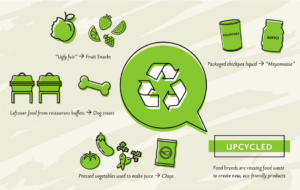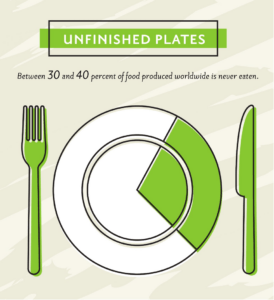 Grandma always said – don’t let your food go to waste.
She may have been on to something.
According to a report by the Waste & Resources Action Program and the Global Commission on the Economy and Climate, reducing consumer food waste could save between $120 billion and $300 billion globally by the year 2030.
But it’s not just about the money. Scientists estimate that up to 14 percent of emissions from agriculture by 2050 could be avoided by managing food use and distribution better, per a study from the Potsdam Institute for Climate Impact Research.
With all eyes on sustainability, there’s incredible motive to create, package and distribute food more responsibly.
Retailers, vendors and consumers are catching on – and are doing their part to reduce food waste.
In fact, Mintel named reducing food waste one of its six key trends impacting the global food and drink market in 2017 and beyond.
Grandma always said – don’t let your food go to waste.
She may have been on to something.
According to a report by the Waste & Resources Action Program and the Global Commission on the Economy and Climate, reducing consumer food waste could save between $120 billion and $300 billion globally by the year 2030.
But it’s not just about the money. Scientists estimate that up to 14 percent of emissions from agriculture by 2050 could be avoided by managing food use and distribution better, per a study from the Potsdam Institute for Climate Impact Research.
With all eyes on sustainability, there’s incredible motive to create, package and distribute food more responsibly.
Retailers, vendors and consumers are catching on – and are doing their part to reduce food waste.
In fact, Mintel named reducing food waste one of its six key trends impacting the global food and drink market in 2017 and beyond.
- More retailers, restaurants and philanthropic organizations are addressing the sheer amount of food and drink that is wasted around the world, which is changing consumer perceptions.
- In 2017, the stigma associated with imperfect produce will begin to fade, more products will make use of ingredients that would have otherwise gone to waste.
 The trend has already showed signs of growth, with a new crop of food brands getting creative by making sure every aspect of their production reduces waste.
The trend has already showed signs of growth, with a new crop of food brands getting creative by making sure every aspect of their production reduces waste.
